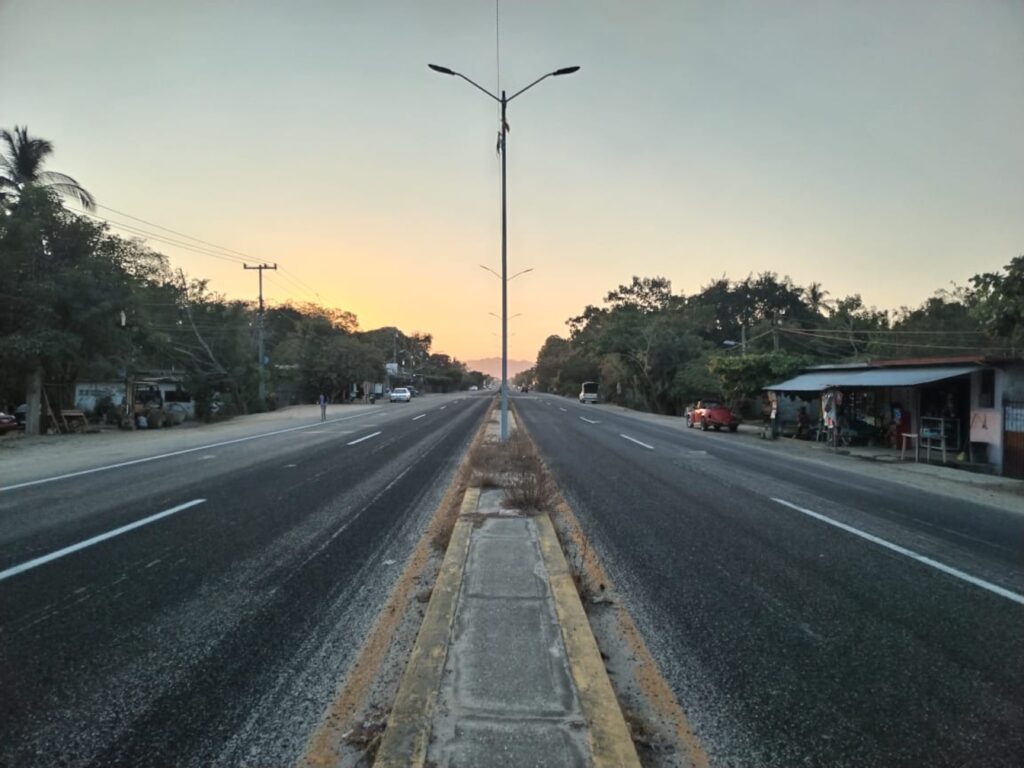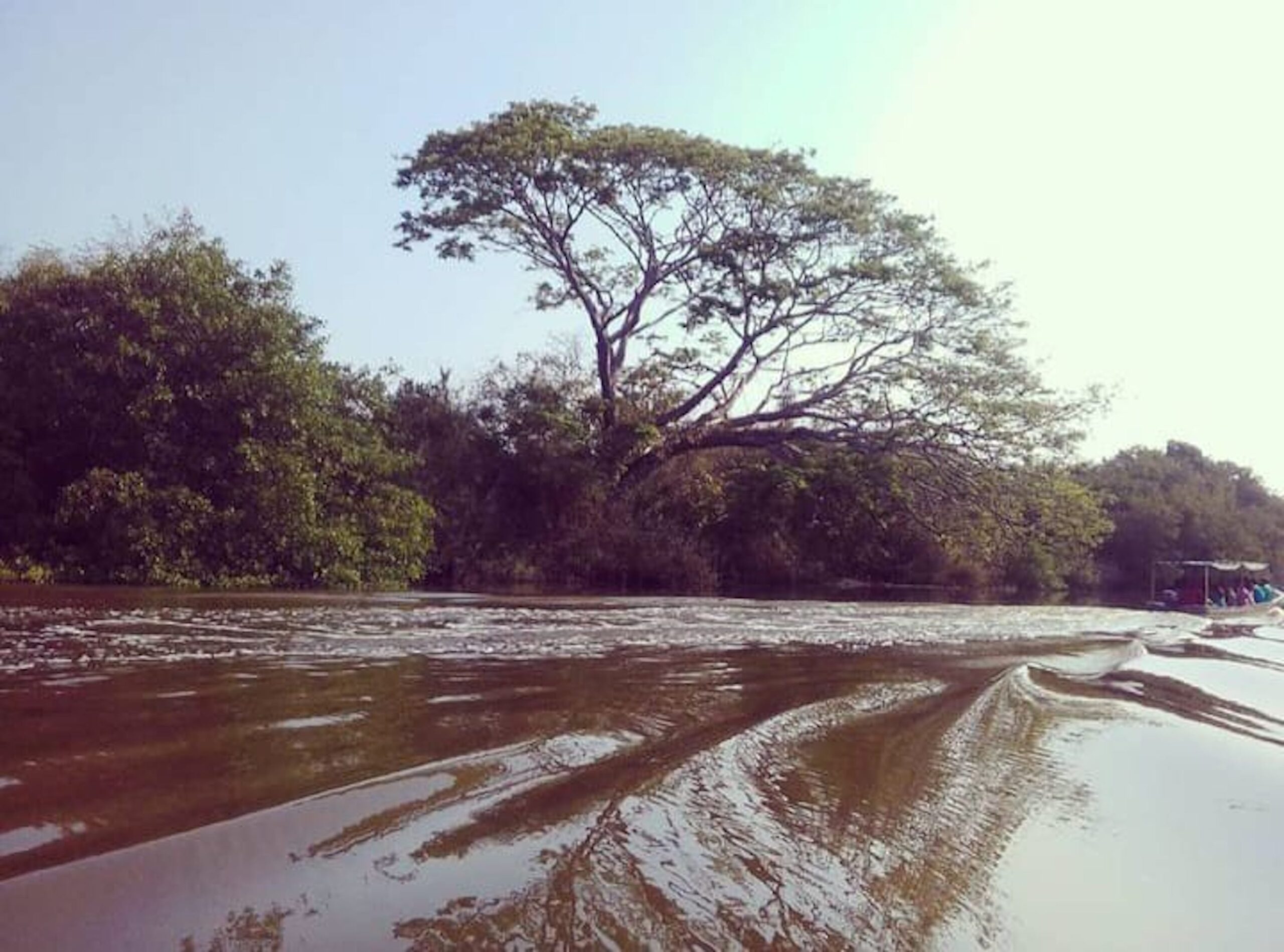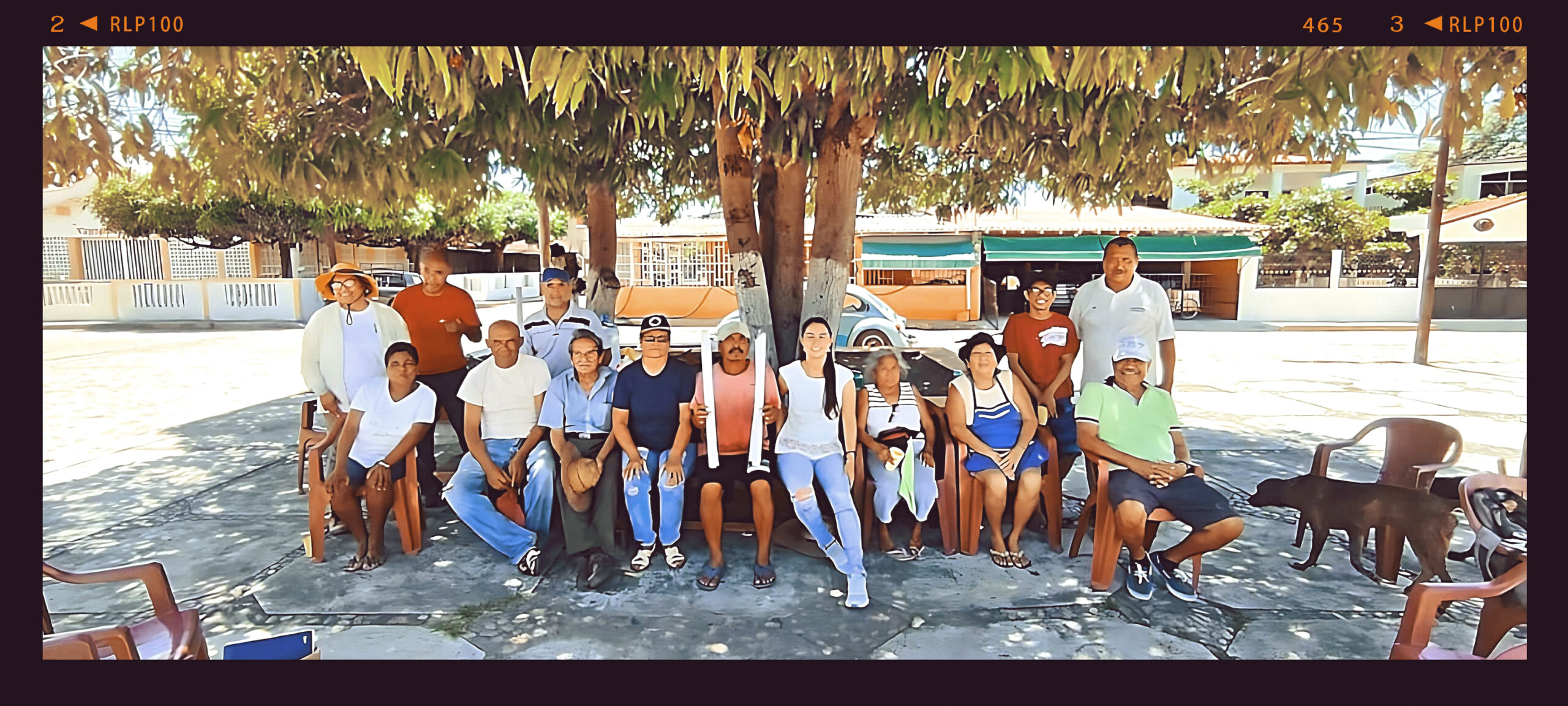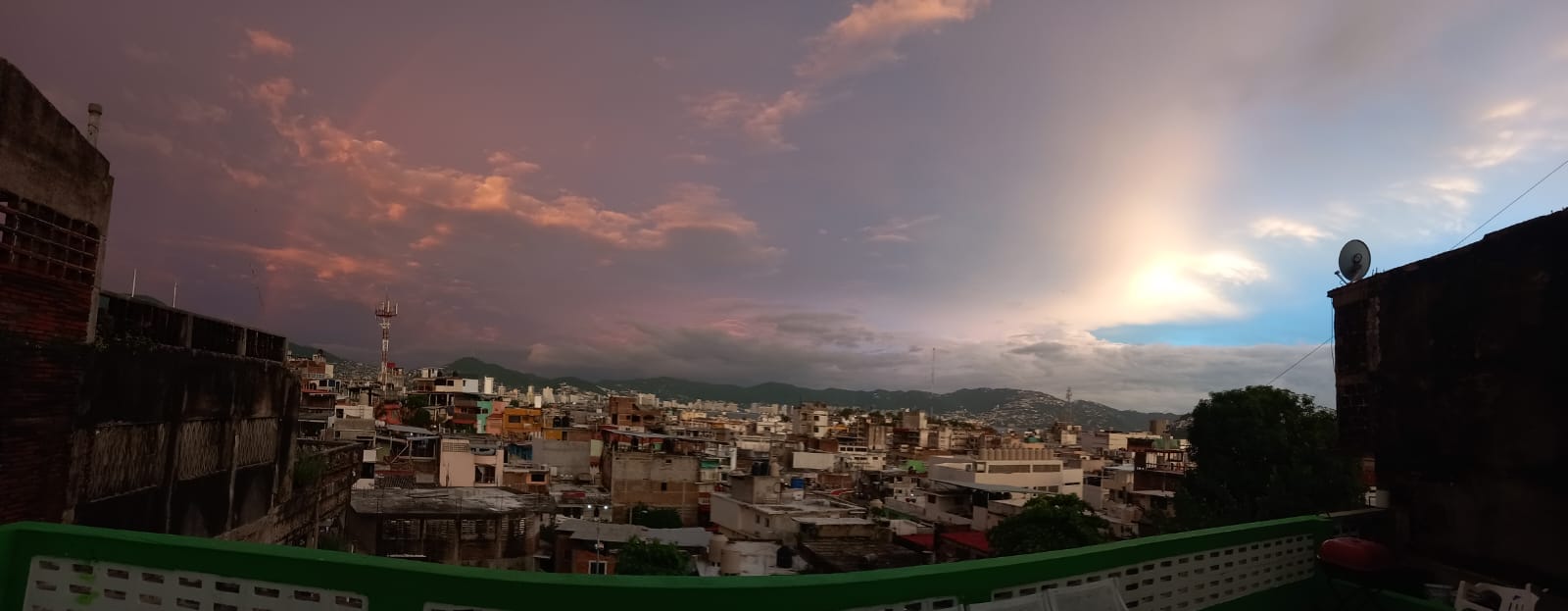by sergio de la paz
coeditores:
-dr. ulises moreno tabarez;
-dra. dulce maría quintero romero;
-dr. Héctor Becerril;
-dra. rocio lopez velasco
Rural Development(ism) and its socio-environmental impact emerged in the late 1960s with the aim of modernising the countryside. However, Escobar (1996) and Gudynas (2011) argue that Rural Development programs in Latin America sponsored by international institutions such as the World Bank contributed to the constitution of peasants as a category of ‘client’ of development programs.
During this time, the so-called green revolution was sponsored as a panacea for the lack of food and malnutrition. This ‘revolution’ consisted of the adoption of various methods, including technological packages and practices in agriculture, aimed at increasing crop yields in small peasant units. However, over time, this method caused serious environmental and social impacts on the peasantry.
Globally, farmers resort to the use of chemical fertilisers to increase crop yields as a result of agricultural policies. In Mexico, the excessive use of these inputs has been exacerbated by the inadequate enforcement of existing legislation and education on the subject, which has caused negative impacts on the environment.
The impacts of the excessive use of chemical fertilisers in agriculture reduce people’s quality of life. Hernandez (2022) and Osorio et al. (2007) document how inorganic fertilisers contain chemical elements that, in the long term, accumulate in crop consumers’ bodies. In addition, constant exposure to these inputs can cause intoxication and be harmful to farmers.
Modern agriculture widely uses chemical fertilisers to increase yields, as soils with agricultural potential are poor in organic matter due to intensive use. However, the excessive use of these inputs causes the soil to degrade in a short period of time.
Towards the end of the 20th century, the prevailing development model in most countries triggered problems such as ongoing economic crises and the deterioration of ecosystems. As a result, new ideas emerged proposing more just and responsible ways of growing, where development is more equitable and sustainable.
Agroecology is one of the most studied and applied alternative models that seeks to take into account the needs and capacities of all actors involved. By promoting the conservation and preservation of natural resources, local culture, and traditions, agroecology aims to promote diversified and resilient food systems. All of this is achieved through the integration of ecological principles and considerations of social justice.
From this point of view, the implementation of agroecological strategies can benefit farmers by using organic fertilisers instead of chemicals. This approach can ultimately increase production yields in the medium term.
As a more sustainable and profitable alternative for these farmers facing the problem of the use of chemical fertilisers, I propose the production of organic fertilisers. I intend to carry out the development project “Manufacturing from Organic Waste as an Agroecological Strategy” in the region of the peri-urban interface of the Laguna de Tres Palos basin, located northeast of the port of Acapulco.
The peri-urban interface of Acapulco, which includes the populations located on the shores of the Tres Palos Lagoon, is a beautiful area facing many difficult problems. Most neighbourhoods and communities lack basic public services, such as drinking water, proper waste collection, and insufficient urban equipment, among others. The inhabitants of the basin, abandoned by the municipal government, must deal with organised crime and the high degree of pollution resulting from the wastewater discharged by real estate developments built in recent years.
The Tres Palos lagoon presents serious problems as a consequence of human activities. Year after year, the discharge of wastewater increases, causing the death of species. In addition to this, the use of chemical fertilisers on crops in the area increases the amount of harmful nutrients in the water, causing serious pollution.
The climate in the region is hot for most of the year, with a rainy season characteristic of tropical climates, which spans from May to November. The area is dominated by tree species from the mid to low stratum of the tropical forest. The zone is connected to the port of Acapulco through the national highway Pinotepa-Acapulco.
Rural-urban transition in the peripheries
In Mexico, the development models implemented since the second half of the 20th century have led to the rapid and disordered growth of urban areas. These rapid changes have caused a horizontal expansion of cities in recent years (Garza, 2002; Valenzuela and Coll-Hurtado, 2009). The peri-urban region of Acapulco is a clear example of the rural-urban transition that has occurred in many parts of Mexico in terms of the integration of rural spaces into the urban sprawl.
Consequently, spaces that were previously considered rural have been integrated into the socioeconomic and cultural structure of urban areas (Llambí, 2012; Maraschio, 2012). To describe this process, academic concepts such as peri-urban, periphery, rururban, among others, have emerged.
In a nutshell, the periphery surrounds the city and includes residential areas, commercial establishments, and surviving agricultural areas. The peri-urban is an area that is located in an intermediate zone between the urban and rural. On the other hand, the rururban has a combination of urban and rural characteristics in its composition.
Currently, rural areas in Mexico have experienced significant changes in their social structure due to urbanisation processes and neoliberal policies in the agricultural sector, such as the elimination of subsidies or tariffs on imported goods. In the peri-urban region of Acapulco, many people commute daily to work in the tourist and commercial sector in the city, demonstrating how the city’s growth has impacted the social dynamics of these territories.
As a result, activities typically associated with rural life such as agriculture and livestock farming have suffered a significant decrease in the space available to carry out these tasks. Additionally, there have been changes in land use and land tenure. Nowadays, in peripheral spaces, agricultural lands coexist with warehouses, landfills, real estate developments, among others. These changes in the social structure of rural territories have had a significant impact on the way economic activities are carried out and on the lives of people who inhabit these areas (Valcárcel, 2017).
In many semi-urbanized territories in the southern part of the country, small-scale agriculture is practised, usually for self-consumption, where farmers, based on their versatility, perform this activity on a part-time basis. In this sense, farmers are forced to adopt other economic activities as an adaptation mechanism in order to obtain income and ensure their family’s heritage.
Acapulco at its borders
If we return to the Tres Palos Lagoon Basin, we can notice that primary economic activities are not practised intensively. Therefore, the region has become vulnerable to instability, making it difficult for people to find stable employment and income, turning the experience of poverty into a vicious cycle. However, during my initial visits to the area, I observed that the most developed productive activities are small-scale aquaculture, agriculture, and livestock farming.

To further explore the productive activities in the Tres Palos Lagoon Basin, it is worth noting the experiences of local inhabitants like Isael Palma, whom I have known for 9 years. Isael is a resident of El Arenal, located on the shores of the lagoon, and he has firsthand knowledge of the agricultural and livestock practices in the area. Regarding agriculture, watermelon, corn, mango, among others, are produced in the territory. Most of the vegetables and fruit trees harvested are for family self-sufficiency. Regarding livestock, there is the raising of poultry, mainly chickens and turkeys, pigs, cattle and goats.
However, according to Isael, the most practised primary activity is aquaculture, where tilapia are raised in floating cages. Due to my background in Environmental Sciences, I asked him if it would be more feasible to raise them in ponds. However, he explained that it is much better to raise them directly in the lagoon due to the amount of nutrients available in the water. “Without a doubt, the drainage water makes them grow more,” he said while letting out a laugh.
Isael reports that in recent years, people have migrated to cities such as Los Cabos or Cancun for economic and job-related reasons. These cities have strong tourist industries, which create job opportunities in sectors such as hospitality and entertainment. Migration is a consequence of changes in land use that favor the construction of residential complexes, lack of government support for agriculture in the outskirts of urban areas, and increasing violence in the region. As a result, many farmers have abandoned their fertile lands and do not return to work them.
The communities located on the shores of the lagoon experience a medium degree of marginalisation, according to estimates from the Comisión Nacional de Población (National Population Commission) as of 2021. This marginalisation refers to limited access to basic services such as education, healthcare, and transportation, as well as the scarcity of equipped schools and healthcare centres.
even though the region’s inhabitants depend on agriculture and fishing, the development of these activities has decreased in recent years due to the lack of adequate technologies and subsidies to improve productive methods. In the region, overworking fertile lands, the establishment of monocultures, and agricultural burning cause farmers to use chemical fertilisers to increase the yield of their plots.
An alternative to the problem in this region is the production of organic fertilisers. Organic fertilisers are more sustainable than chemical fertilisers because they release nutrients slowly and improve soil health without causing pollution or degradation. They are obtained from agricultural and kitchen waste, thereby maintaining a profitable level of production in the plots of the Tres Palos Lagoon Basin region.
Therefore, it is relevant to mention that technical training in the production and use of organic fertilisers can lead to more sustainable farming practices and greater competitiveness of family plots in the region. Ultimately, this could generate a surplus of organic fertilisers that would benefit local farmers in the long term.
Rural Participation and Empowerment
To stimulate the participation of the beneficiaries in the community intervention process, I will use qualitative methodology with elements of participatory action research (PAR) methods. Through my technical accompaniment, actions will be sought by the farmers of the project within the framework of the PAR project. In this way, it is intended to actively involve the beneficiaries in the community intervention process.
As part of my project, I plan to adopt the principles that Oliveira and Waldenez (2010) specify regarding participatory action research. They emphasise the desirable scenario of exchanging knowledge between academia and the popular sector to modify or improve certain aspects, such as attitudes, aptitudes, or capacities of a specific group, and thus have a favourable impact on the quality of life.
The project I have conceived is based on the concept of peasant self-management, which aims to strengthen capabilities and organisational processes without the intervention of public institutions or organisations that promote development from top to bottom. This approach means that there is no external imposition of policies or solutions but rather a focus on empowering local communities to make decisions that suit their specific needs and challenges. The purpose of this approach is to improve the well-being and quality of life of the farming community in the region by placing the power in their hands rather than external sources.
future prospects for our agroecological project
Traditionally, agricultural waste has been considered a worthless byproduct, but its utilisation through composting techniques to produce organic fertilisers is an efficient way to decrease waste and the environmental impacts of improper handling. Adopting agroecological practices on the edge of the region could be the key to improving crops and incomes for farmers on the community’s periphery.
By getting closer to the community, I was able to closely understand the structure and operation of the local agricultural sector, which allowed me to design a strategic plan and formulate project action lines with an agroecological perspective in mind. The next stage involves the implementation of a series of workshops that promote the adoption of sustainable practices and the dissemination of knowledge about agroecology in the region, in an effort to unite the periphery and core of the community around a more sustainable and environmentally conscious approach.
References
Consejo Nacional de Población (2021) Índice de marginación por localidad. [busqueda de localidades: tres palos, el bejuco, san pedro las playas, el arenal, amatillo.]
Domínguez, R. (1993) Caracterizando al campesinado y a la economía campesina: pluriactividad y dependencia del mercado como nuevos atributos de la campesinidad. Agricultura y Sociedad., 66. pp. 97-136.
Escobar, A. (2005) El “postdesarrollo” como concepto y práctica social. En Daniel Mato (coord.), Políticas de economía, ambiente y sociedad en tiempos de globalización. Caracas: Facultad de Ciencias Económicas y Sociales, Universidad Central de Venezuela. pp. 17-32.
Gudynas, E. (2014). El postdesarrollo como crítica y el Buen Vivir como alternativa. Buena vida, buen vivir: imaginarios alternativos para el bien común de la humanidad
Hernández, R. (2022) Estudio comparativo de alternativas de fertilizantes para los cultivos de Colombia a partir de la aplicación de la biotecnología. (Tesis de Especialidad- Fundación Universidad de América). Repositorio institucional.
Oliveira, V., Waldenez, M. (2010) Trayectorias de investigación acción: concepciones, objetivos y planteamientos. Revista Iberoamericana de Educación. 53, (5).
Osorio, H., Amador, S. y Tanka, B. (2007) La salud sustentable y ambiente social. Aportes, Revista de la Facultad de Economía, BUAP, 36





